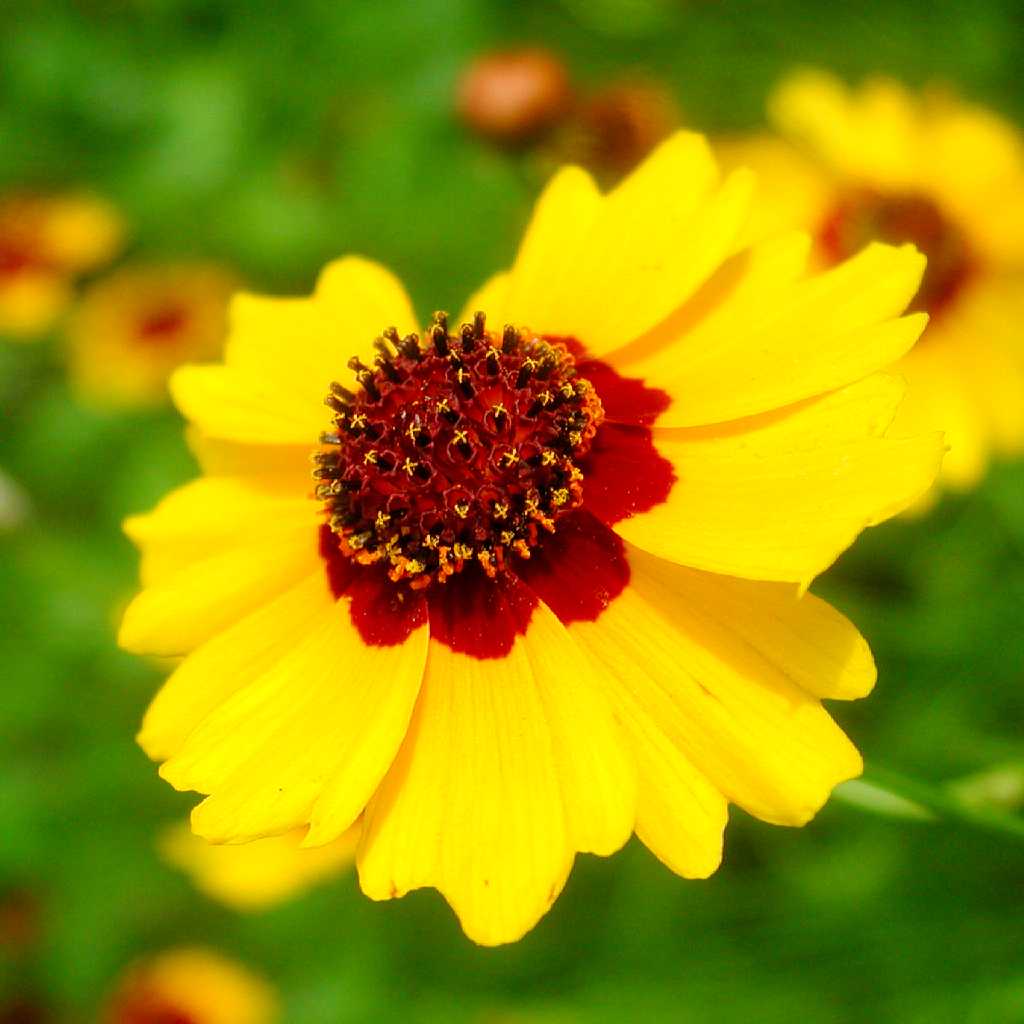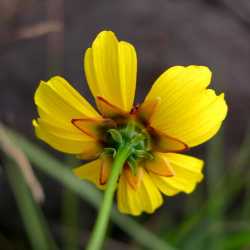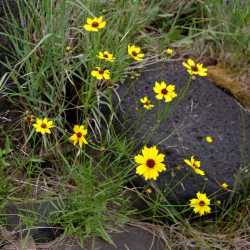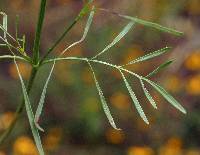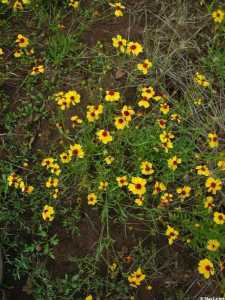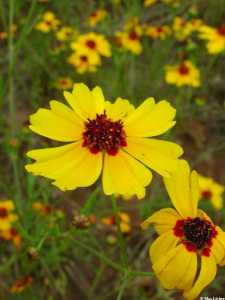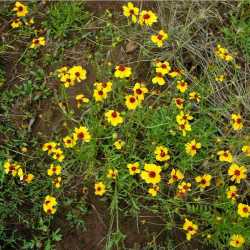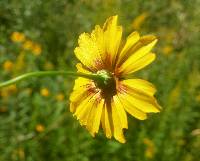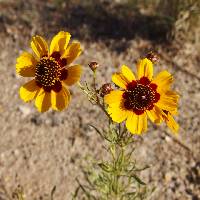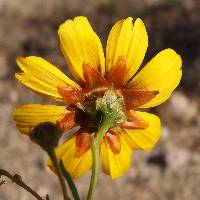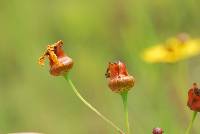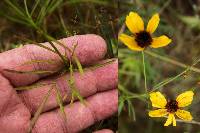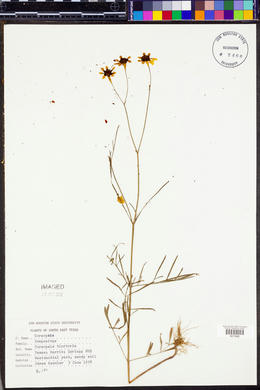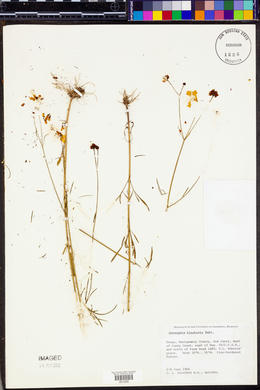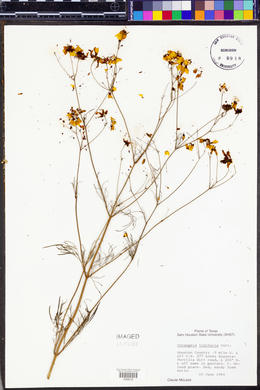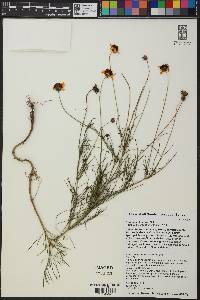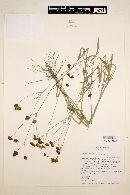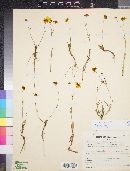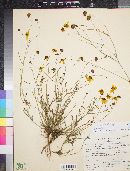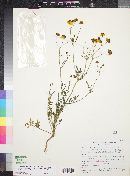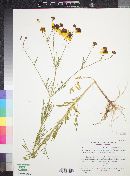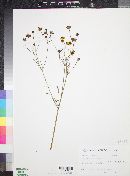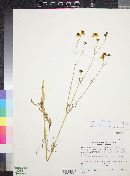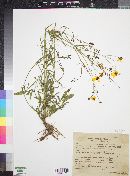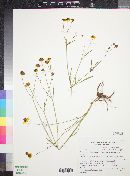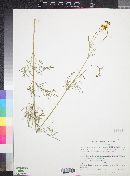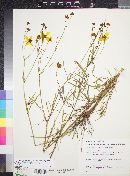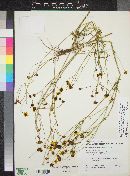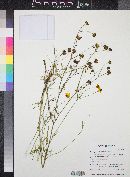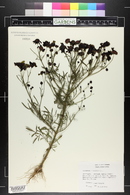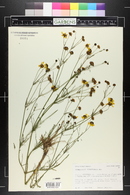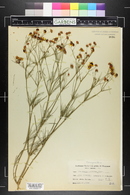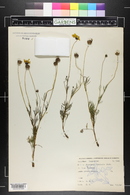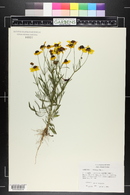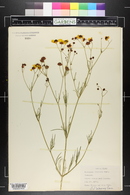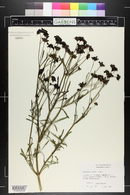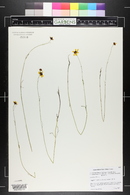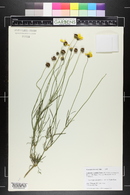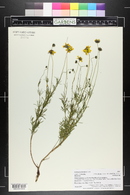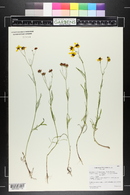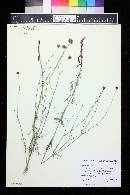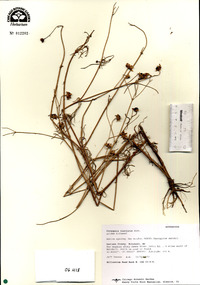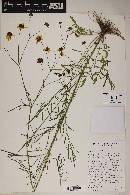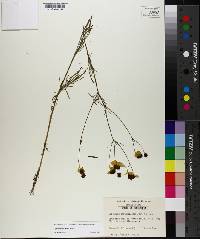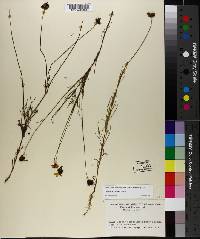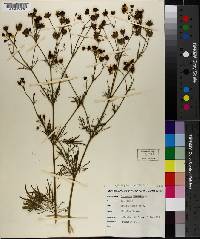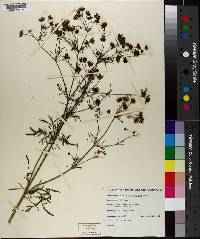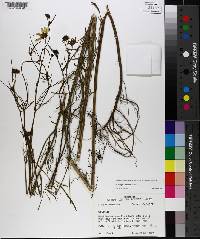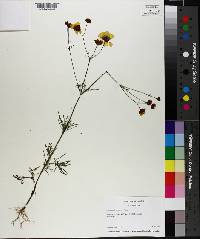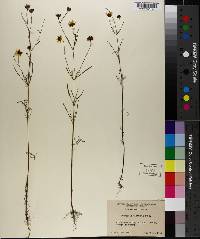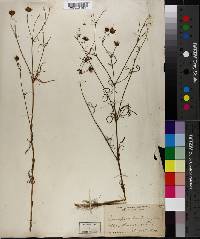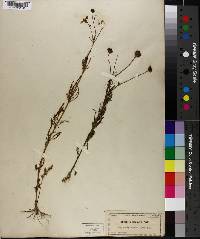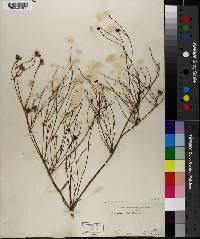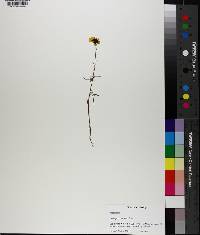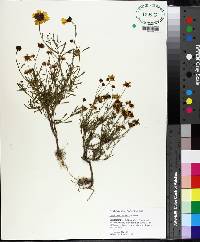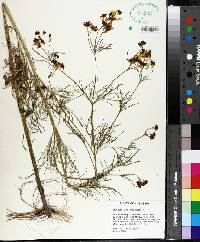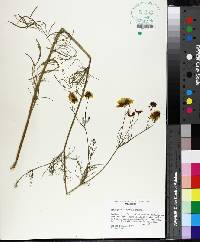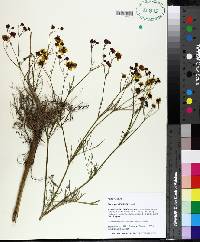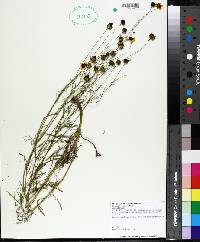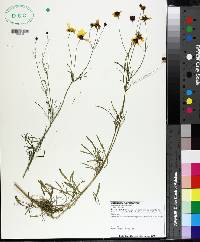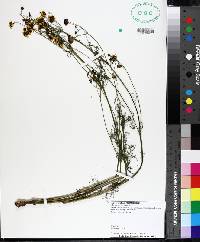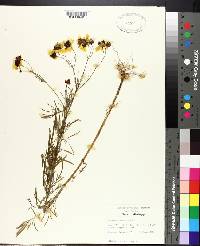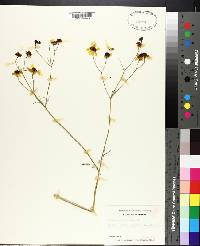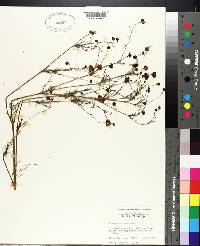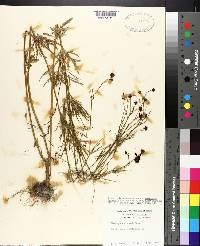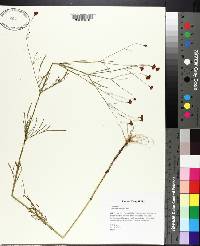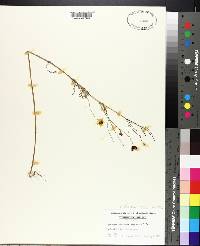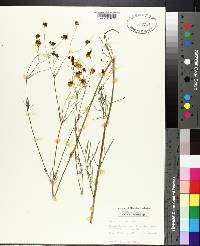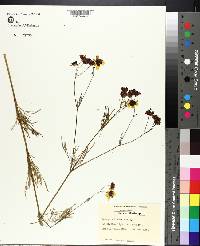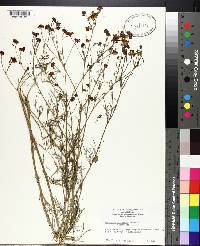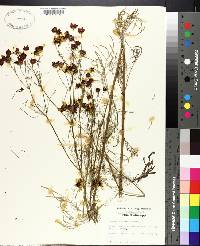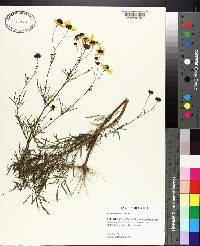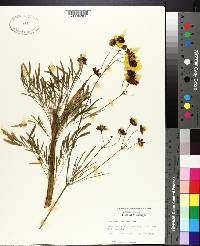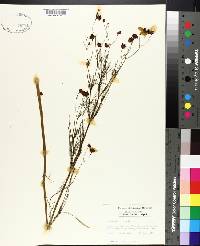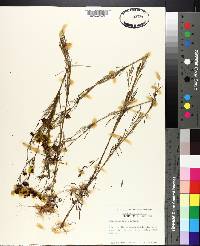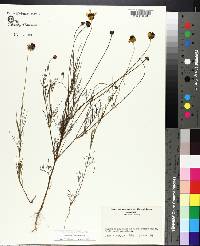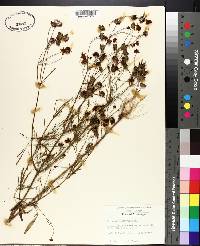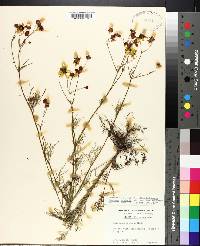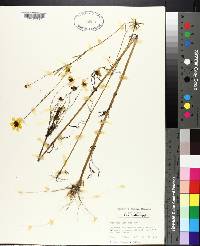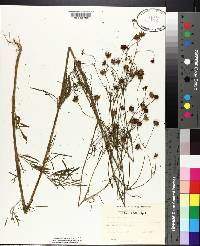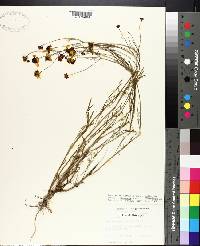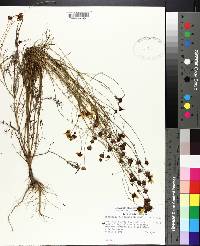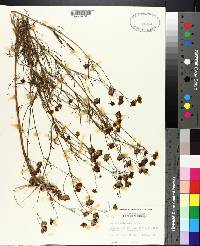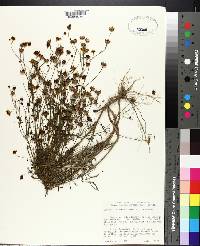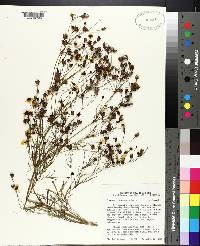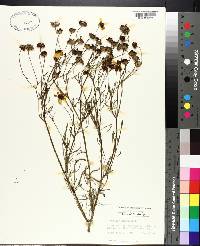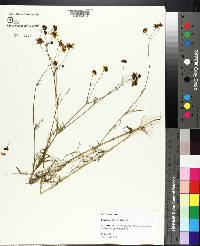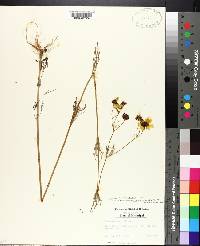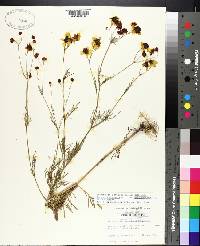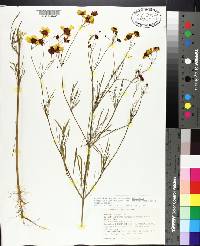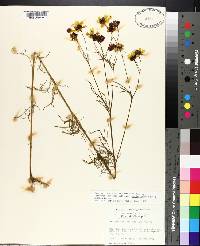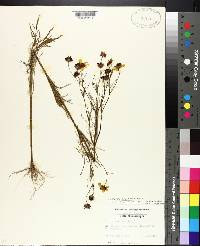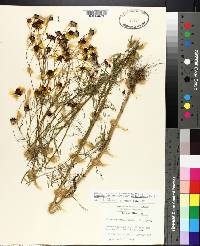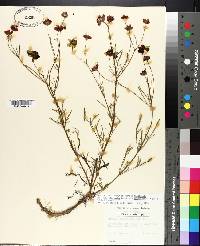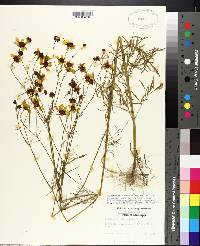Coreopsis tinctoria
|
|
|
|
Family: Asteraceae
Golden Tickseed
[Calliopsis cardaminefolia DC., moreCoreopsis cardaminifolia , Coreopsis tinctoria f. atropurpurea (Hook.) Fernald, Coreopsis tinctoria var. atropurpurea] |
Annuals, (10-)30-70(-150+) cm. Leaves: proximal blades usually 1(-3)-pinnate, terminal lobes lance-ovate to oblanceolate, 10-60 × 5-25 mm; cauline blades usually 1-2(-3)-pinnate, rarely simple, simple blades or terminal lobes lance-linear to linear or filiform, 10-45 × 0.5-2(-5+) mm. Peduncles 1-5(-15+) cm. Calyculi of deltate-lanceolate bractlets 1-3+ mm. Phyllaries ± lance-oblong to lance-ovate, 4-7(-9) mm. Ray laminae usually yellow with red-brown blotch, sometimes red-brown in proximal 1/3-9/10 and distally yellow, rarely yellow throughout, 12-18+ mm. Disc corollas 2.5-3+ mm. Cypselae 1.5-3(-4+) mm, wings 0 or 0.1-0.7+ mm wide; pappi 0, or of 1-2 cusps or subulate scales 0.1-1+ mm. 2n = 24 (+ 0-2 Bs). Flowering year round, mostly Jun-Aug. Moist, sandy or clay soils, sometimes alkaline flats, prairies, ditches, disturbed places; (0-)20-1500(-2000) m; Alta., B.C., Man., Ont., Que., Sask.; Ala., Ariz., Ark., Calif., Colo., Conn., Del., D.C., Fla., Ga., Idaho, Ill., Ind., Iowa, Kans., Ky., La., Maine, Md., Mass., Mich., Minn., Miss., Mo., Mont., Nebr., N.H., N.J., N.Mex., N.Y., N.C., N.Dak., Ohio, Okla., Oreg., Pa., R.I., S.C., S.Dak., Tenn., Tex., Vt., Va., Wash., W.Va., Wis., Wyo.; Mexico (Coahuila, Nuevo León, Tamaulipas). FNA 2006, Kearney and Peebles 1969, McDougall 1973 Duration: Annual Nativity: Native Lifeform: Forb/Herb General: Herbaceous annuals, biennials, or perennials. Leaves: Opposite, the cauline leaves entire to 1-3 times pinnately dissected, the lobes lance-linear to linear or filiform, to 45 mm long and 2 mm wide, the proximal leaves with lobes somewhat longer and broader. Flowers: Heads large and showy, radiate, rays yellow, disks reddish-brown, involucres double with narrow and herbaceous outer phyllaries, the inner broad and membranous, receptacles flat or convex and chaffy. Fruits: Achenes wingless or with tiny wings to 1 mm wide. Pappus forming a small cup or absent. Ecology: Found in moist, sandy, or clay soils, alkaline flats, on low ground, prairies, ditches, and disturbed areas, from 0-7,000 ft (0-2134 m); flowering year round or June-August. Distribution: A widespread species, occurring from Minnesota and Manitoba to Louisiana, west to British Columbia, Arizona, and New Mexico. Notes: Good indicators for this species are the showy flowers with bright yellow rays and reddish brown centers and the wingless or nearly wingless achenes. Several species in this genus are used as ornamentals, and in many areas are considered escaped from cultivation. Etymology: Coreopsis is from the Greek koris, a bug, and -opsis, which means a resemblance, refers to the cypselae, while tinctoria means used in dying, or indicates some level of staining the comes form this plant. Synonyms: Several, see Tropicos Editor: LCrumbacher 2011 Glabrous, leafy and branching, taprooted annual 4-12 dm; lvs subsessile or short-petiolate, 5-10 cm, once or twice pinnatifid, the ultimate segments linear or lance-linear, 1-4 mm wide; heads numerous, the disk red-purple, 5-12 mm wide; outer invol bracts 2 mm, the inner 5-8 mm, deltoid-oblong or ovate; rays 1-2 cm, yellow, usually red-brown at base; receptacular bracts linear-subulate, attenuate-acuminate, few-striate; disk cors 4-toothed; style-appendages short and blunt; achenes 1-4 mm, wingless or narrowly to broadly winged; pappus obsolete or nearly so; 2n=24. Moist, low places and disturbed sites; primarily c. and s. Great Plains and Tex., e. to Ark. and La., but widely cult., escaped, and irregularly established elsewhere; June-Aug. Ours is var. tinctoria. Gleason, Henry A. & Cronquist, Arthur J. 1991. Manual of vascular plants of northeastern United States and adjacent Canada. lxxv + 910 pp. ©The New York Botanical Garden. All rights reserved. Used by permission. |
|
|
|

